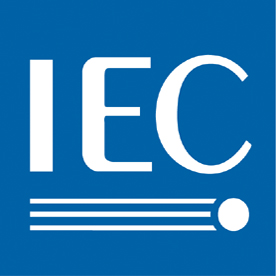IEC 61097-4:2024
Global maritime distress and safety system (GMDSS) - Part 4: Inmarsat-C ship earth station and Inmarsat enhanced group call (EGC) equipment - Operational and performance requirements, methods of testing and required test results
Note: a commented version of this publication exists
IEC 61097-4:2024 CMV
Abstract
IEC 61097-4:2024 specifies the performance requirements and methods of testing for Inmarsat-C ship earth stations (SES) capable of transmitting and receiving direct-printing communications, and for enhanced group call (EGC) receivers, for use in the GMDSS and for use for long-range identification and tracking (LRIT). The available variants are:
Class 0: An EGC receiver, either stand-alone or an element of a GMDSS installation in accordance with the Inmarsat design and installation guidelines (DIGs) for GMDSS installations.
Class 1: A basic SES providing shore-to-ship and ship-to-shore message transfer only.
Class 2: As class 1 but with EGC as an alternative to shore-to-ship transfer using a shared receiver.
Class 3: As class 1 but with EGC using an independent receiver.
NOTE 1 The 34th session of the IMO Sub-Committee on Radiocommunications decided that class 2 equipment would be adequate to provide sufficient availability for the reception of maritime safety information for the GMDSS.
This document complies with IMO performance requirements stated in the normative references, Inmarsat technical characteristics and test procedures, and IEC 60945 general requirements except where modifications are explicitly stated in this document. Technical characteristics essential to GMDSS and LRIT operation as defined by the IMO are identified.
All text of this document, whose wording is identical to that in IMO SOLAS Convention 1974 as amended in 1988 and Resolutions MSC.513(105), MSC.263(84) and MSC.306(87) is printed in italics and reference made to the Resolution/Recommendation and subclause number.
This document covers equipment construction and testing. Matters relating to installation can be found in the Inmarsat Maritime design and installation guidelines (see Bibliography). Those to be found in IMO Resolutions MSC.513(105), MSC.263(84) and MSC.306(87) are reproduced in Annex A.
Responsibility for type approval of Inmarsat-C and Inmarsat-EGC is vested in Inmarsat by IMO Resolutions MSC.513(105) and MSC.306(87) (see 4.2.1). Therefore, this document does not reproduce Inmarsat test procedures in full but refers to where they are given in Inmarsat documentation cited in the normative references to this document (Annex C).
NOTE 2 For the purposes of this document the terms Inmarsat C, Inmarsat-C, Inmarsat Standard-C, Standard-C refer to the same equipment.
Class 0: An EGC receiver, either stand-alone or an element of a GMDSS installation in accordance with the Inmarsat design and installation guidelines (DIGs) for GMDSS installations.
Class 1: A basic SES providing shore-to-ship and ship-to-shore message transfer only.
Class 2: As class 1 but with EGC as an alternative to shore-to-ship transfer using a shared receiver.
Class 3: As class 1 but with EGC using an independent receiver.
NOTE 1 The 34th session of the IMO Sub-Committee on Radiocommunications decided that class 2 equipment would be adequate to provide sufficient availability for the reception of maritime safety information for the GMDSS.
This document complies with IMO performance requirements stated in the normative references, Inmarsat technical characteristics and test procedures, and IEC 60945 general requirements except where modifications are explicitly stated in this document. Technical characteristics essential to GMDSS and LRIT operation as defined by the IMO are identified.
All text of this document, whose wording is identical to that in IMO SOLAS Convention 1974 as amended in 1988 and Resolutions MSC.513(105), MSC.263(84) and MSC.306(87) is printed in italics and reference made to the Resolution/Recommendation and subclause number.
This document covers equipment construction and testing. Matters relating to installation can be found in the Inmarsat Maritime design and installation guidelines (see Bibliography). Those to be found in IMO Resolutions MSC.513(105), MSC.263(84) and MSC.306(87) are reproduced in Annex A.
Responsibility for type approval of Inmarsat-C and Inmarsat-EGC is vested in Inmarsat by IMO Resolutions MSC.513(105) and MSC.306(87) (see 4.2.1). Therefore, this document does not reproduce Inmarsat test procedures in full but refers to where they are given in Inmarsat documentation cited in the normative references to this document (Annex C).
NOTE 2 For the purposes of this document the terms Inmarsat C, Inmarsat-C, Inmarsat Standard-C, Standard-C refer to the same equipment.
Additional information
| Publication type | International Standard |
|---|---|
| Publication date | 2024-02-20 |
| Edition | 4.0 |
| Available language(s) | English |
| TC/SC | TC 80 - Maritime navigation and radiocommunication equipment and systemsrss |
| ICS | 47.020.70 - Navigation and control equipment |
| Stability date | 2029 |
| Pages | 32 |
| File size | 775 KB |
The following test report forms are related:
More information
Share this page
Share your publications
Learn how to share your publications with your colleagues, using networking options.
Payment information
Our prices are in Swiss francs (CHF). We accept all major credit cards (American Express, Mastercard and Visa, JCB and CUP), PayPal and bank transfers as form of payment.
Keep in touch
Keep up to date with new publication releases and announcements with our free IEC Just Published email newsletter.
Contact customer services
Please send your enquiry by email or call us on +41 22 919 02 11 between 09:00 – 16:00 CET Monday to Friday.

